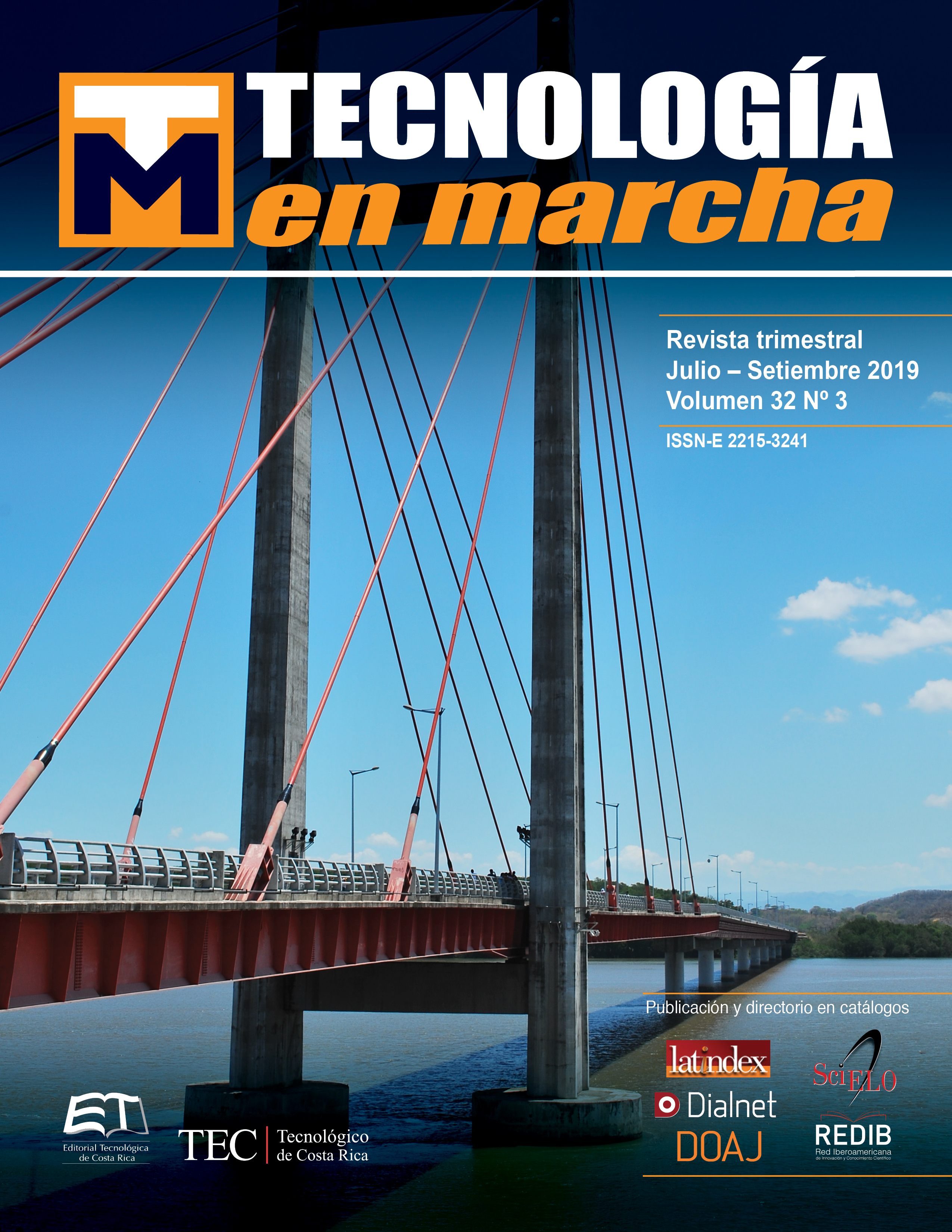Artisanal mining for the extraction of gold through the use of mercury: State of the art of environmental impact in water, air and soil media
Main Article Content
Abstract
Artisanal and small-scale mining (ASM), as a subsistence economy, has had an important growth in recent years due to the increase in the price of gold, generating environmental and socioeconomic impacts. The use of the technique of gold extraction with amalgams of mercury and thermal decomposition for the purification of the metal; generates at least five environmental problems: land degradation, deforestation, pollution and sedimentation of water courses, atmospheric pollution and degradation of wildlife and humans health. The organic form of mercury is the most toxic, it can bioaccumulate and biomagnify through the trophic chain. In the present study, a description of the state of the art of the ASM at a global level is presented, as well as its socio-economic and environmental implications. It was determined that innovation in the techniques used by the ASM; would help reduce and further eliminate the use of mercury; as well as the generation of regulations or laws that guarantee environmental sustainability and an adequate socioeconomic development of artisanal and small-scale miners.
Article Details
Los autores conservan los derechos de autor y ceden a la revista el derecho de la primera publicación y pueda editarlo, reproducirlo, distribuirlo, exhibirlo y comunicarlo en el país y en el extranjero mediante medios impresos y electrónicos. Asimismo, asumen el compromiso sobre cualquier litigio o reclamación relacionada con derechos de propiedad intelectual, exonerando de responsabilidad a la Editorial Tecnológica de Costa Rica. Además, se establece que los autores pueden realizar otros acuerdos contractuales independientes y adicionales para la distribución no exclusiva de la versión del artículo publicado en esta revista (p. ej., incluirlo en un repositorio institucional o publicarlo en un libro) siempre que indiquen claramente que el trabajo se publicó por primera vez en esta revista.
References
[2] Y. Male, A. Reichelt, M. Pocock, and Nanlohy, “Recent mercury contamination from artisanal gold mining on Buru Island, Indonesia – Potential future risks to environmental health and food safety”. Marine Pollution Bulletin, vol.77, pp.428–433, 2013
[3] S. Bose, R. Schierl, D.Nowak, U. Siebert, J. Frederick, W. Owi, Y. Ismawati, and I.Ir, “A preliminary study on health effects in villagers exposed to mercury in a small-scale artisanal gold mining area in Indonesia”, Environmental Research, vol .149, pp.274–281, 2016
[4] UNEP, Global Mercury Assessment 2013: Sources, Emissions, Releases and Environmental Transport. UNEP Chemicals Branch, Geneva, Switzerland, 2013
[5] M. M. Veiga, G. Angeloci, and J. A Meech,”Review of barriers to reduce mercury use in artisanal gold mining” The Extractive Industries and Society, vol. 1, pp. 351–361, 2014
[6] J. Chételat, M. Amyot, P. Arp, , J.M. Blais, D. Depew, C.A. Emmerton, M. Evans, M Gamberg, N. Gantner, C. Girard, J. Graydon, J. Kirk, D. Lean, I. Lehnherr, D. Muir, M. Nasr, A.J. Poulain, M. Power,
[7] B. Gao, L Han, H. Hao and H. Zhou, “Pollution characteristics of mercury (Hg) in surface sediments of major basins, China”, Ecological Indicators, vol. 67, pp. 577–585, 2016
[8] G.P. Arrifano, R.C. Rodriguez, M. Jimenez, V. Ramírez, N.F. da Silva, J.R.Souza, M. Augusto, R.S. Paraense, B.M. Macchi, J.L.do Nascimento, and M.E.Crespo, “Large-scale projects in the amazon and human exposure to mercury: The case-study of the Tucuruí Dam”, Ecotoxicology and Environmental Safety, vol. 147, pp. 299–305, 2018
[9] K. Leopold, M. Foulkes, and P. Worsfold, ”Methods for the determination and speciation of mercury in natural waters-A review”, Analytica Chimica Acta, vol.663(2), pp.127–138,2010
[10] S. K Pandey, K. H. Kim, and R. J. C. Brown,” Measurement techniques for mercury species in ambient air” TrAC - Trends in Analytical Chemistry, vol. 30 (6), pp. 899–917, 2011
[11] R. Jagtap, and W. Maher, “Measurement of mercury species in sediments and soils by HPLC-ICPMS” Microchemical Journal, vol.121, pp.65–98, 2015
[12] F. Nyame, and J.A. Grant, “The political economy of transitory mining in Ghana: Understanding the trajectories, triumphs, and tribulations of artisanal and small-scale operators”, The Extractive Industries and Society, vol. 1, pp.75–85, 2014
[13] P.Li, X.B Feng, G.L Qiu, L.H Shang, and Z.G Li,” Mercury pollution in Asia: A review of the contaminated sites”, Journal of Hazardous Materials, vol.168, pp.591–601, 2009
[14] G. Torkar, and Z. Zwitter, “Historical impacts of mercury mining and stocking of non-native fish on ichthyofauna in the Idrijca River Basin, Slovenia” Aquat Sci, vol. 77, pp. 381–39 , 2015
[15] H. Gutiérrez, S.B. Sujitha, M. P. Jonathan, S.K Sarkar, F. Medina, H. Ayala, G. Morales, and L. Arreola, “Mercury levels in human population from a mining district in Western Colombia”, Journal of Environment Sciences, vol. 68, pp.83-90, 2017
[16] S. Dondeyne, and E. Ndunguru, “Artisanal gold mining and rural development policies in Mozambique”: Perspectives for the future. Futures, Vol.62, pp. 120–127, 2014
[17] K. Drace, A. M Kiefer, M. M Veiga, M. K Williams, B Ascari, K. A Knapper, and J. V. Cizdziel, “Mercury-free, small-scale artisanal gold mining in Mozambique : utilization of magnets to isolate gold at clean tech mine”. Journal of Cleaner Production, vol.32, pp. 88–95, 2012
[18] M.J. Clifford, “Future strategies for tackling mercury pollution in the artisanal gold mining sector : Making the Minamata Convention work ”, Futures, Vol 62, pp,106–112, 2014
[19] S. J. Spiegel, S. Agrawal, D. Mikha, K. Vitamerry, P. Le Billon, M. Veiga, K. Konolius, and B. Paul, “Phasing Out Mercury? Ecological Economics and Indonesia’s Small-Scale Gold Mining Sector” Ecological Economics, vol.144, pp.1–11, 2018.

